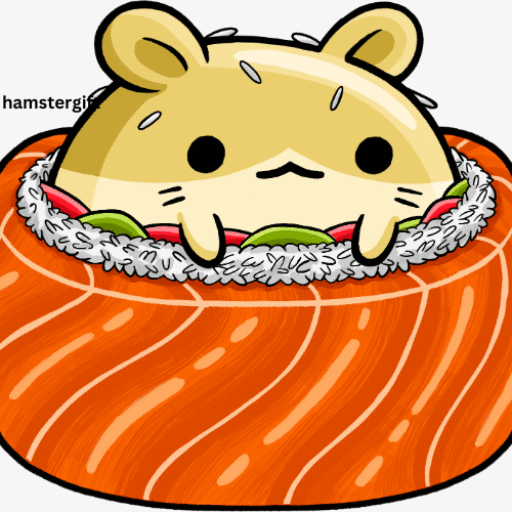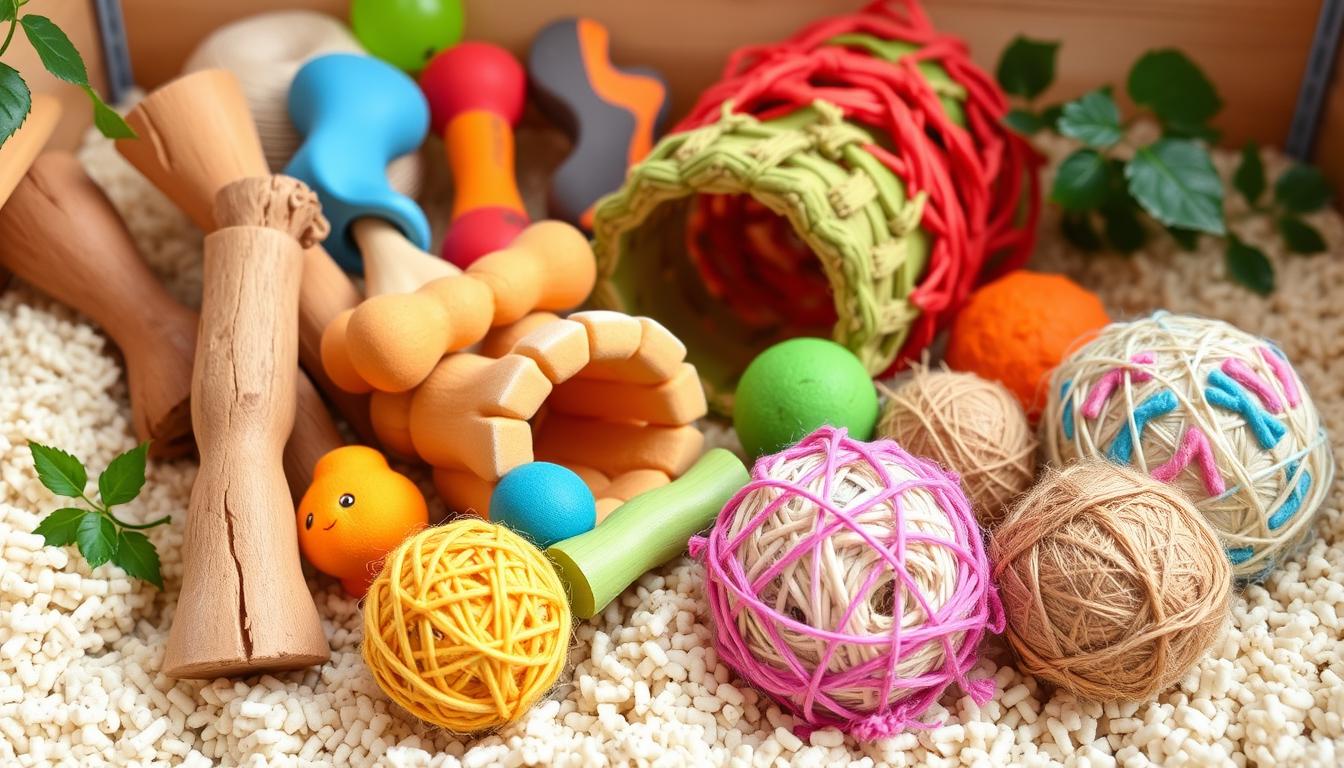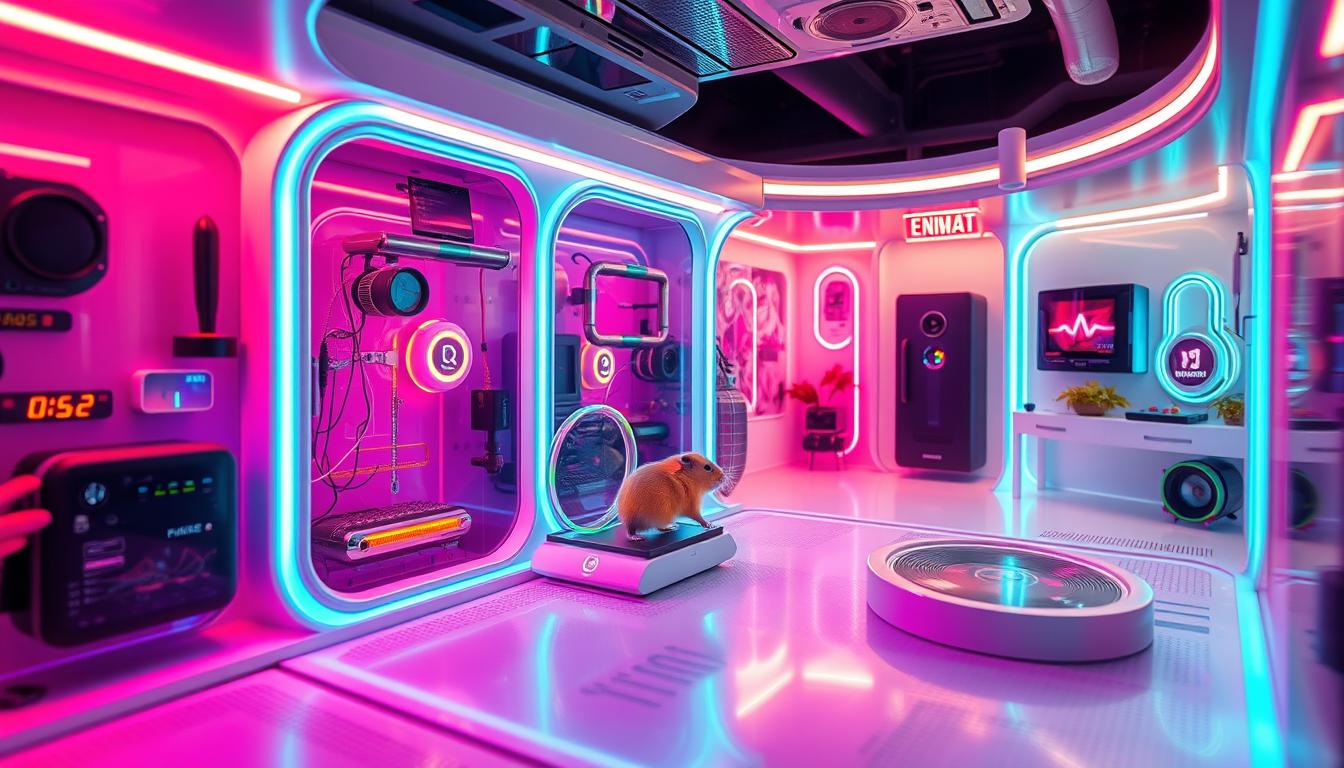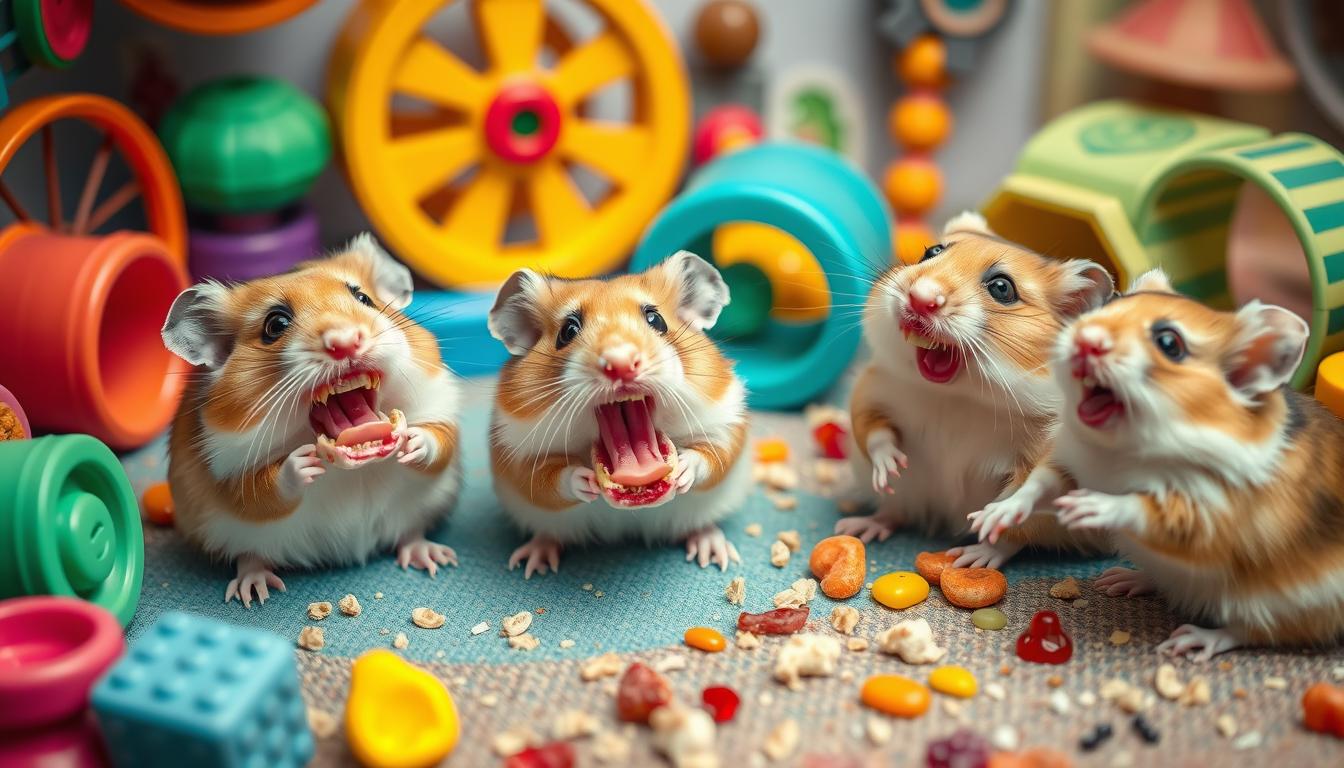## Best Hamster Toys: 7 Ways to Enrich Your Tiny Friend’s Life
**Description:** Best Hamster Toys are essential for keeping your furry companion happy, healthy, and entertained. This comprehensive guide explores a wide range of hamster toys, from simple cardboard creations to complex interactive setups, ensuring your hamster’s physical and mental well-being. We’ll cover safety considerations, toy categories, and even a simple DIY recipe for a fun and engaging treat!
—
**Why Hamster Toys Matter: Beyond the Wheel**
Many people think a hamster wheel is enough to keep a hamster entertained. While exercise is crucial, it’s only one piece of the puzzle. Hamsters are intelligent, curious creatures with natural instincts to burrow, chew, explore, and forage. Without adequate enrichment, they can become bored, stressed, and even develop behavioral problems like excessive chewing or aggression.
Best Hamster Toys address these needs by providing opportunities for:
* **Physical Exercise:** Beyond the wheel, toys encourage climbing, digging, and exploring, strengthening muscles and promoting overall health.
* **Mental Stimulation:** Puzzles, foraging toys, and interactive items challenge their minds, preventing boredom and cognitive decline.
* **Natural Behaviors:** Toys that mimic natural environments (like digging boxes or tunnels) allow them to express their innate instincts.
* **Chewing & Dental Health:** Hamsters’ teeth constantly grow, and chewing is essential to keep them trimmed and healthy. Appropriate toys provide safe and satisfying chewing outlets.
* **Stress Reduction:** A stimulating environment can significantly reduce stress and anxiety in hamsters, leading to a happier and healthier pet.
—
**Categorizing the Best Hamster Toys: A Comprehensive Overview**
Let’s break down the world of Best Hamster Toys into categories, exploring options within each and highlighting key considerations.
**1. Chewing & Gnawing Toys: Keeping Teeth Trimmed & Happy**
This is arguably the *most* important category. Hamsters *need* to chew. If they don’t, their teeth will overgrow, leading to serious health problems.
* **Wood Chews:** Untreated, safe woods like apple, willow, birch, and hazelnut are excellent choices. Avoid pine and cedar, as they contain oils that can be harmful. Look for chew sticks, blocks, and even small wooden houses.
* **Cardboard:** Plain cardboard tubes (toilet paper, paper towel) and boxes are a cheap and readily available option. Ensure there’s no glue or tape residue. (See our DIY section below for a fun cardboard creation!)
* **Mineral Stones & Grinding Blocks:** These provide a different texture for chewing and can help wear down teeth. Choose those specifically designed for hamsters.
* **Coconut Shells:** A natural and durable option that provides a satisfying chewing experience.
* **Safe Plastics:** Some hard, hamster-safe plastics can be used for chewing, but always supervise your hamster to ensure they don’t ingest large pieces.
**Safety Note:** Regularly inspect chewing toys for damage and replace them when they become too small or splintered.
**2. Tunnels & Hideaways: Creating a Safe & Secure Space**
Hamsters are prey animals and instinctively seek out safe places to hide.
* **PVC Pipes:** Smooth, easy-to-clean, and provide a great tunnel experience.
* **Cardboard Tubes:** Again, readily available and inexpensive.
* **Wooden Tunnels:** Offer a more natural look and chewing opportunities.
* **Ceramic Hides:** Durable, easy to clean, and provide a cool retreat in warmer temperatures.
* **Coconut Hides:** A natural and aesthetically pleasing option.
* **Fabric Hides:** Soft and cozy, but require more frequent cleaning.
**Considerations:** Ensure the tunnel is large enough for your hamster to comfortably navigate and that the hideaway is appropriately sized for them to feel secure.
**3. Foraging Toys: Stimulating Natural Hunting Instincts**
These toys encourage your hamster to search for food, mimicking their natural foraging behavior.
* **Scatter Feeding:** Simply scattering food around the cage encourages exploration.
* **Foraging Balls:** These balls have holes that release food as the hamster rolls them around.
* **Puzzle Feeders:** Require the hamster to solve a simple puzzle to access the food.
* **Snuffle Mats:** Fabric mats with hidden pockets where you can hide treats.
* **DIY Foraging Boxes:** (See our DIY section below!)
**4. Climbing & Activity Centers: Encouraging Exercise & Exploration**
These toys provide opportunities for climbing, jumping, and exploring different levels.
* **Multi-Level Cages:** Offer built-in climbing opportunities.
* **Wooden Ladders & Ramps:** Provide a safe and sturdy way to navigate different levels.
* **Ropes & Vines:** Natural-looking climbing options (ensure they are hamster-safe and free of toxic chemicals).
* **Play Structures:** Pre-made activity centers with tunnels, platforms, and climbing features.
**5. Interactive Toys: Engaging Their Minds & Preventing Boredom**
These toys require the hamster to interact with them in a specific way, providing mental stimulation.
* **Rolling Balls:** Simple balls that the hamster can push around.
* **Treat-Dispensing Balls:** Release treats as the hamster rolls them.
* **Digging Boxes:** Boxes filled with safe digging materials like chinchilla sand or shredded paper.
* **Sand Baths:** Essential for hygiene and provide a fun digging opportunity.
* **Mirrors (Supervised):** Some hamsters enjoy observing their reflection, but *always* supervise and limit the time to prevent stress.
**6. Wheel Considerations: The Foundation of Hamster Exercise**
While we’ve already mentioned the wheel, it deserves special attention.
* **Solid Surface:** Avoid wire or mesh wheels, as these can injure their feet.
* **Appropriate Size:** The wheel should be large enough for the hamster to run with a straight back. A general guideline is 8 inches for dwarf hamsters and 11-12 inches for Syrian hamsters.
* **Silent Operation:** Look for wheels with quiet bearings to avoid disturbing you and your hamster.
* **No Ramps:** Ramps can cause injury.
**7. DIY Best Hamster Toys: Unleash Your Creativity!**
Creating your own toys is a fun and cost-effective way to enrich your hamster’s life.
—
**DIY Cardboard Maze: A Fun & Engaging Challenge**
This project is simple, inexpensive, and provides hours of entertainment for your hamster.
**Materials:**
* Several cardboard boxes (various sizes)
* Cardboard tubes (toilet paper, paper towel)
* Hamster-safe glue (optional, for extra stability)
* Scissors or a craft knife (adult supervision required)
* Treats (for rewarding your hamster’s exploration)
**Instructions:**
1. **Plan Your Maze:** Before you start cutting, sketch out a rough design for your maze. Consider the size of your hamster and the available space in their cage. Think about incorporating tunnels, dead ends, and multiple levels.
2. **Cut the Cardboard:** Using scissors or a craft knife (with adult supervision!), cut the cardboard boxes into various shapes and sizes. Create walls, tunnels, and platforms.
3. **Assemble the Maze:** Arrange the cardboard pieces to form the maze structure. You can use hamster-safe glue to secure the pieces together, but this is optional. The maze should be sturdy enough to withstand your hamster’s exploration.
4. **Create Tunnels:** Cut holes in the cardboard walls to create tunnels connecting different sections of the maze. Use cardboard tubes to create longer tunnels.
5. **Add Levels (Optional):** Stack smaller boxes on top of each other to create multiple levels in the maze. Ensure the levels are securely attached and accessible for your hamster.
6. **Hide Treats:** Place small treats throughout the maze to encourage your hamster to explore. Hide them in tunnels, dead ends, and under platforms.
7. **Introduce the Maze to Your Hamster:** Place the maze in your hamster’s cage and let them explore it at their own pace. Observe their behavior and make any necessary adjustments to the maze.
8. **Regularly Replace:** Cardboard will eventually degrade. Replace the maze when it becomes too damaged.
**Safety Note:** Always supervise your hamster when they are using the cardboard maze. Remove any small pieces of cardboard that they may chew off and ingest.
—
**Safety First: Essential Considerations for Best Hamster Toys**
* **Material Safety:** Only use non-toxic materials. Avoid plastics that can be easily chewed and ingested. Research the safety of any wood or fabric before introducing it to your hamster.
* **Size & Accessibility:** Ensure toys are appropriately sized for your hamster to prevent choking hazards or injuries.
* **Sharp Edges & Small Parts:** Avoid toys with sharp edges or small parts that could be swallowed.
* **Regular Inspection:** Regularly inspect toys for damage and replace them when necessary.
* **Supervision:** Always supervise your hamster when introducing new toys, especially those with moving parts.
* **Avoid Scented Items:** Strong scents can irritate your hamster’s sensitive respiratory system.
—
**Choosing the Right Toys for Your Hamster’s Personality**
Not all hamsters are the same! Consider your hamster’s individual personality and preferences when selecting toys.
* **Energetic & Active Hamsters:** Benefit from climbing structures, wheels, and interactive toys.
* **Shy & Timid Hamsters:** May prefer cozy hideaways and foraging toys that allow them to explore at their own pace.
* **Chewers:** Need a constant supply of safe chewing toys to keep their teeth trimmed.
* **Diggers:** Will love digging boxes filled with safe digging materials.
—
**Beyond the Toys: Creating a Stimulating Environment**
Remember, Best Hamster Toys are just one part of creating a stimulating environment. Consider these additional factors:
* **Cage Size:** A larger cage provides more space for exploration and enrichment.
* **Bedding:** Provide a deep layer of safe bedding for burrowing.
* **Social Interaction (if appropriate):** Some hamsters benefit from supervised interaction with their owners or other hamsters (if they are compatible).
* **Environmental Enrichment:** Rotate toys regularly to keep things interesting. Introduce new scents and textures to stimulate their senses.
By providing a variety of Best Hamster Toys and creating a stimulating environment, you can ensure your furry friend lives a happy, healthy, and fulfilling life. Remember to observe your hamster’s behavior and adjust their toys and environment accordingly to meet their individual needs.



